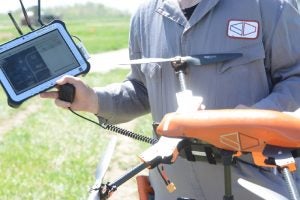Oilfield digitization advancing solutions to meet an environmental challenge
 Two global trends are converging in the energy industry, and the result could spur the biggest environmental advancement in a generation.
Two global trends are converging in the energy industry, and the result could spur the biggest environmental advancement in a generation.
Known by some as the “digitization of the oilfield,” it’s the new wave of technologies linked with big data that is transforming an established industry. For the world’s oil and gas industry, this push toward digitization is emerging as a central part of strategic planning, as the energy landscape is reshaped by increasing competition from renewables and electrification. But competitiveness means more than bringing new efficiencies online, it also means improving environmental performance.
As each link in the oil and gas supply chain becomes more automated and connected, companies are starting to remotely monitor facilities in real time and mine billions of data points to find new productivity and performance insights. This data-driven future offers the potential for companies to not only improve their business outlook, but to anticipate and prevent problems such as well blowouts, toxic spills, or the release of dangerous pollutants into the atmosphere that include methane.
Companies ranging from trend-spotting consulting firms like McKinsey and Co. and PwC to energy industry service providers like Schlumberger and Halliburton are already preparing for a future where productivity will be measured not just in barrels and BTUs, but in pollution avoided.
With methane, in particular, there is a significant opportunity for digitization to produce large environmental returns. About 25 percent of the warming the planet experiences today is driven by human-caused methane emissions. Worldwide, the oil and gas industry is one of the largest sources of methane emissions, accounting for an estimated 75 million metric tons every year. It is possible, however, for the industry to cut these emissions by more than half using simple and inexpensive solutions.
Methane Takes Center Stage
Fortunately, the world is waking to the important role that global oil and gas industry methane emissions play in climate change — and the threat they pose to the future of the industry. And the more connected oil and gas facilities become, the more data companies can collect to recognize patterns that allow them to shift the balance from methane maintenance to methane prevention.
Any good prevention plan starts with sound analytics. But today’s official methane emission estimates are based on figures that are often out of date or inaccurate.
That’s why my organization, Environmental Defense Fund, spent five years coordinating with experts in the field to extensively document the data gap firsthand through a series of groundbreaking peer-reviewed studies conducted at oil and gas facilities in the United States. We found that emissions varied widely between facilities. On average, new measurements indicate that industry’s total emissions are 60 percent higher than what EPA reports.
We also found that a small number of sites were responsible for a disproportionate amount of total emissions. These “super-emitters” are sporadic and can pop up at anywhere, anytime, meaning the problem can’t be addressed by focusing on a small number of known “troubled” sites. And because they’re both unpredictable and invisible, these leaks persist for days or weeks before being detected. We and other scientists have conducted similar research at Canadian facilities and found comparable results.
In fact, the more we study, the clearer the methane message becomes: If we are to address the looming threat of climate change, we must reduce methane and carbon dioxide emissions.
Better Data, Better Performance
Significantly reducing routine and abnormal emissions events is key to addressing the industry’s broader methane challenge. Stationary, mobile, and satellite sensors made possible by new technology will be a big part of that. But the digitization of the oilfield presents an unusual and promising synergy between environmental and corporate goals.
The sensors and connected infrastructure that oil and gas companies install to prevent accidents, improve efficiency, and cut costs have the potential to also drive reductions in methane emissions.
The remote monitoring of well pads, processing plants, and distribution systems could help energy companies recover much of the $30 billion of methane they waste or flare every year.* They would also spot super emitters faster, and quickly drive down millions of tons of potent climate pollution.
Sensors across the supply chain can help detect trouble spots and help operators dispatch crews with precision. That saves time and money, of course. But predictive analytics, made possible by billions of data points collected 24/7 from facilities throughout a company’s supply chain, can also identify potential equipment failures and malfunctions before they happen, and create opportunities to develop preventive maintenance practices that avoid methane emission problems before they begin.
Often, mitigating an industry’s impact on the environment is viewed as an added process or an added expense. With methane from the oil and gas industry, that need not be the case. Transforming methane detection from a manual, analog process into a remote, automated and digital process is a game changer for methane reductions and fits perfectly into the changes the industry is already implementing.
*Based on EDF analysis of EIA, IGU, and NOAA data
[Tweet “Oilfield digitization advancing solutions to meet an environmental challenge”]











